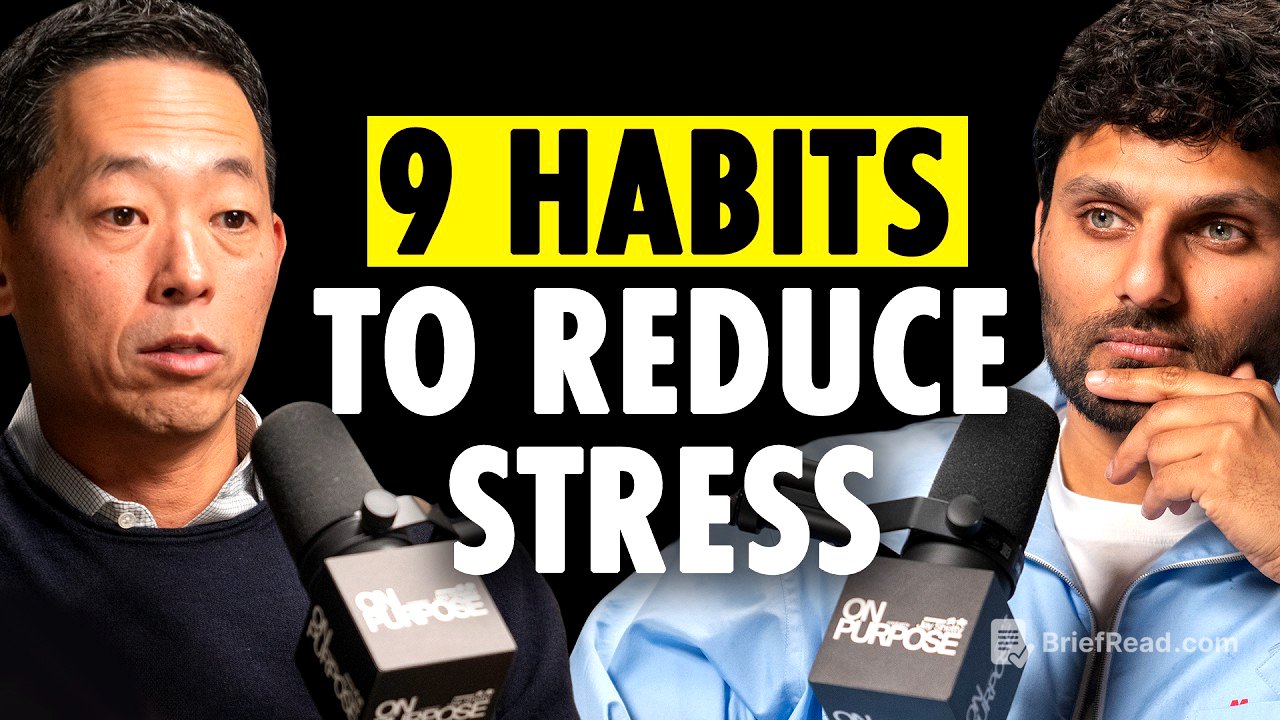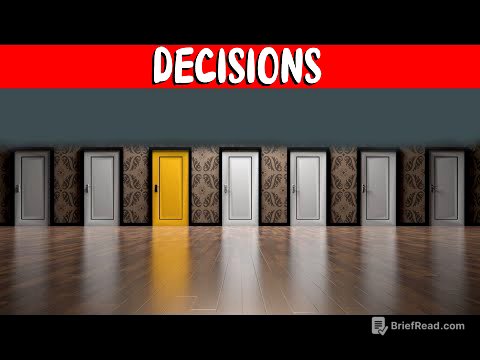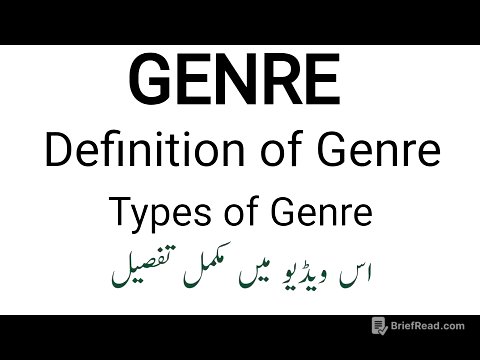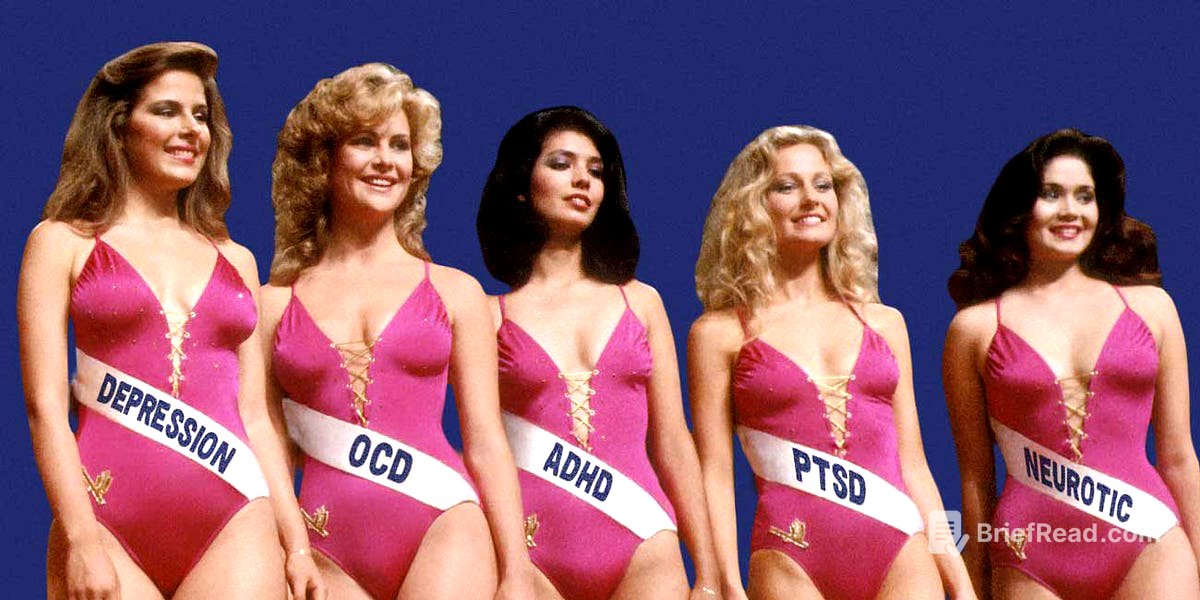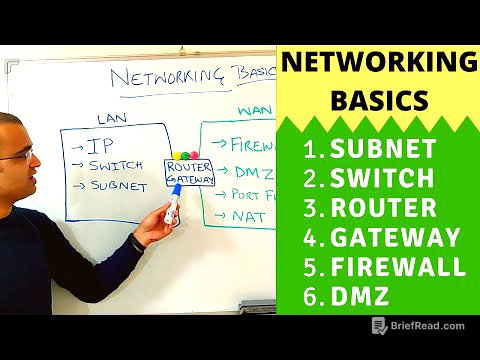TLDR;
This episode of the Jay Shetty Podcast features David Ko, CEO of Calm, discussing mental wellness practices and strategies for managing stress and burnout in the digital world. They introduce the concept of the "battery" to simply assess one's mental state, differentiate between good and bad stress, and explore tools for managing burnout in the workplace. The conversation emphasizes the importance of vulnerability in leadership, the role of mindfulness and meditation, and the need for companies to prioritize their employees' mental health.
- Using "battery" concept to simply assess mental state
- Differentiating between good and bad stress
- Exploring tools for managing burnout in the workplace
Introduction [0:00]
Jay Shetty introduces David Ko, the CEO of Calm, highlighting his book "Recharge," which provides mental wellness practices for the digital age. The discussion will cover stress, burnout, and feeling drained, offering insights and solutions for those struggling in these areas.
What Are You Not Calm About? [2:10]
David Ko shares that he is currently stressed about his oldest daughter applying to colleges. He finds it challenging to take a backseat and allow her to navigate the process independently, despite his urge to get involved.
STOP Asking 'How Are You?' Ask THIS Instead [3:09]
David introduces the concept of asking "How's your battery?" instead of "How are you?" to gauge someone's mental state. This approach simplifies the conversation and avoids the common "fine" response, allowing for a more accurate assessment of well-being. The idea came from a friend who used it with her kids to better understand their emotional state.
The Zones of Your Battery [5:41]
David explains the "battery" concept, dividing mental state into four zones: 75-100% (fine), 50-75% (need to recharge), 25-50% (time to take a break), and 0-25% (need a hard stop to recharge). Recognizing these zones helps individuals identify when they need to take action to avoid burnout. He relates this to how people react when their phone battery is low, suggesting a similar awareness for personal well-being.
How To Recharge Your Battery [8:52]
Jay shares his personal strategy of monitoring his health like his phone battery, aiming to stay above 50%. He cancels plans and prioritizes rest to recharge, reframing rest as essential for optimal performance. David adds that everyone recharges differently, and it's important to find techniques that work for you.
What To Do If You're At 1% Battery [10:44]
David advises that if someone reports being at 5%, it's important to be present, listen, and create analogies to help them understand what's draining their battery. He emphasizes the need to avoid rushing through these conversations and to be prepared to offer support.
Vulnerability in Leadership [14:42]
The discussion shifts to the importance of vulnerability in leadership. David notes that many CEOs struggle with vulnerability, fearing it will be seen as weakness. Jay argues that vulnerability is a sign of strength and that sharing personal struggles can create a safer and more open environment for employees.
Good vs. Bad Stress [18:36]
David and Jay discuss the difference between good stress (eustress) and bad stress (distress). Good stress can lead to resilience and growth, while bad stress can lead to anxiety, depression, and physical ailments. They emphasize the importance of finding a balance and communicating openly about stress in the workplace. David shares how Calm treated the election period as a "Super Bowl moment," offering resources to help people manage their stress.
Mental Health in the Workplace [24:22]
David and Jay discuss how mental health conversations often stop at the workplace, unlike in everyday life. They stress the importance of making mental health approachable at work, starting from the top. Jay describes good stress as knowing the challenge and feeling supported, while bad stress is only seeing the challenge without support. David shares that many CEOs lack transparency with their employees, adding to their stress.
Tools for Managing Burnout [38:45]
David explains how mindfulness and meditation can help with stress and burnout. He notes that many Calm users seek the app for sleep support, which is often disrupted by devices. He shares his personal experiences with unhealthy coping mechanisms and how he wishes he had tools like Calm earlier in life. Jay adds that a still mind leads to quicker, better decisions, while a stressed mind leads to slower, worse decisions.
The Future of Mental Health Conversations [53:28]
David and Jay discuss the importance of leaders being vulnerable and creating a culture where employees feel safe discussing their mental health. David shares his personal struggles with smoking and weight, emphasizing the need to live with imperfections and manage stress in healthy ways. They conclude by highlighting the importance of presence, gratitude, and building personal connections in the workplace.
